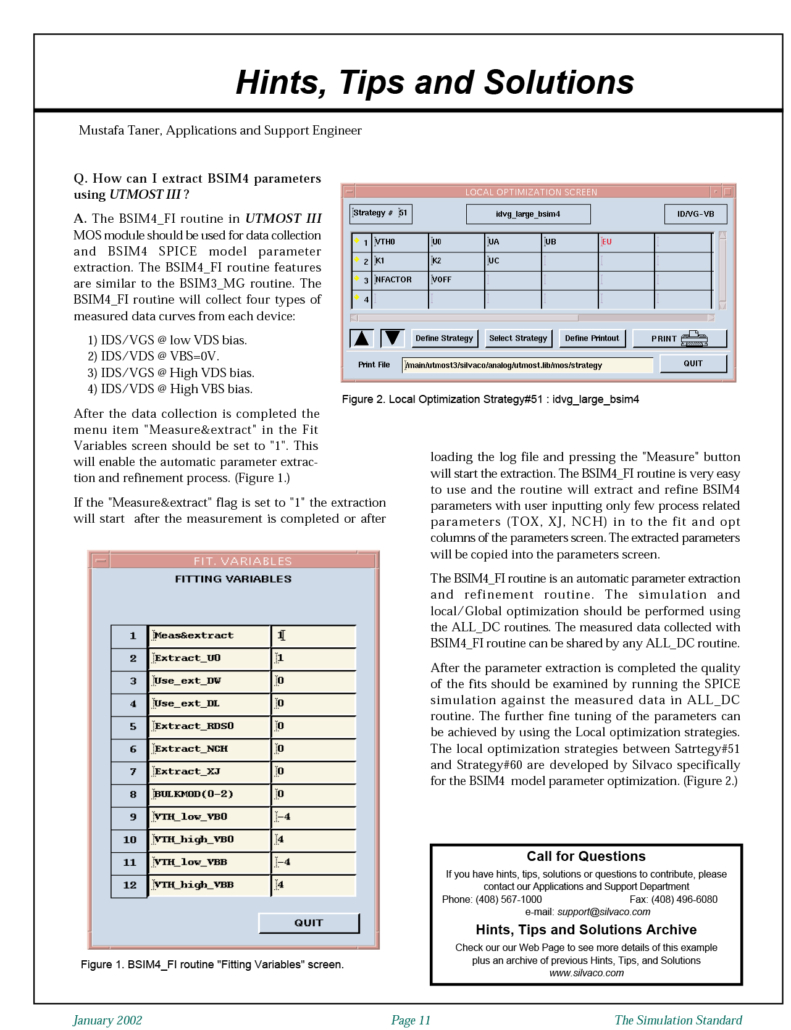Simulation Standard
Technical Journal
A Journal for Process and Device Engineers

How to extract BSIM4 parameters using UTMOST III
The BSIM4_FI routine in UTMOST III MOS module should be used for data collection and BSIM4 SPICE model parameter extraction. The BSIM4_FI routine features are similar to the BSIM3_MG routine. The BSIM4_FI routine will collect four types of measured data curves from each device.

Connectivity Options for DRC Spacing Check Operations in Savage
An IC layout has to satisfy many technological design requirements. One of these is spacing, i.e., a layout object has to be separated from another one by some minimal distance. In addition, any spacing requirement (e.g. minimal distance between layout objects) varies depending on the particular features of the layout objects, e.g. the layer the objects belong to, the purpose of these objects, etc.

Recent improvements in Expert, Savage, Guardian and Maverick
Most of recent improvements in Expert, Savage, Guardian and Maverick are aimed at the enhancement of the usability of these tools. All features described are developed according to the requests of our customers.

Optimal Packing of Orthoblocks For ULSI Floorplanning
Virtually all latest and prospective enhancements of Expert Layout processor (for example, semi-automatic floorplanning) are based on sophisticated geometrical models. In some cases some advanced mathematical research is necessary to develop efficient algorithms. This article is devoted to the problem of optimal packing of orthoblock which is originated from several areas of VLSI design automation.

Hints, Tips and Solutions for Expert Layout Editor
If I try to close a project, Expert gives me a prompt: "Save changes in a project?", but I remember that I didn't do any editing of cells. When can be the reason. The second question is: how do I know which cells were modified?

Simulating Impurity Freeze-Out During Low Temperature Operation
The low temperature operation of many device structures has been shown as an effective method for improving device performance without reducing device size. By modeling low temperature phenomena, numerical simulation of device operation at low temperatures provides an effective means for analyzing such performance improvements before investing manufacturing time or money. It is the purpose of this paper to discuss the modeling of the dopant freeze-out phenomenon in ATLAS and provide an application example of its use.

